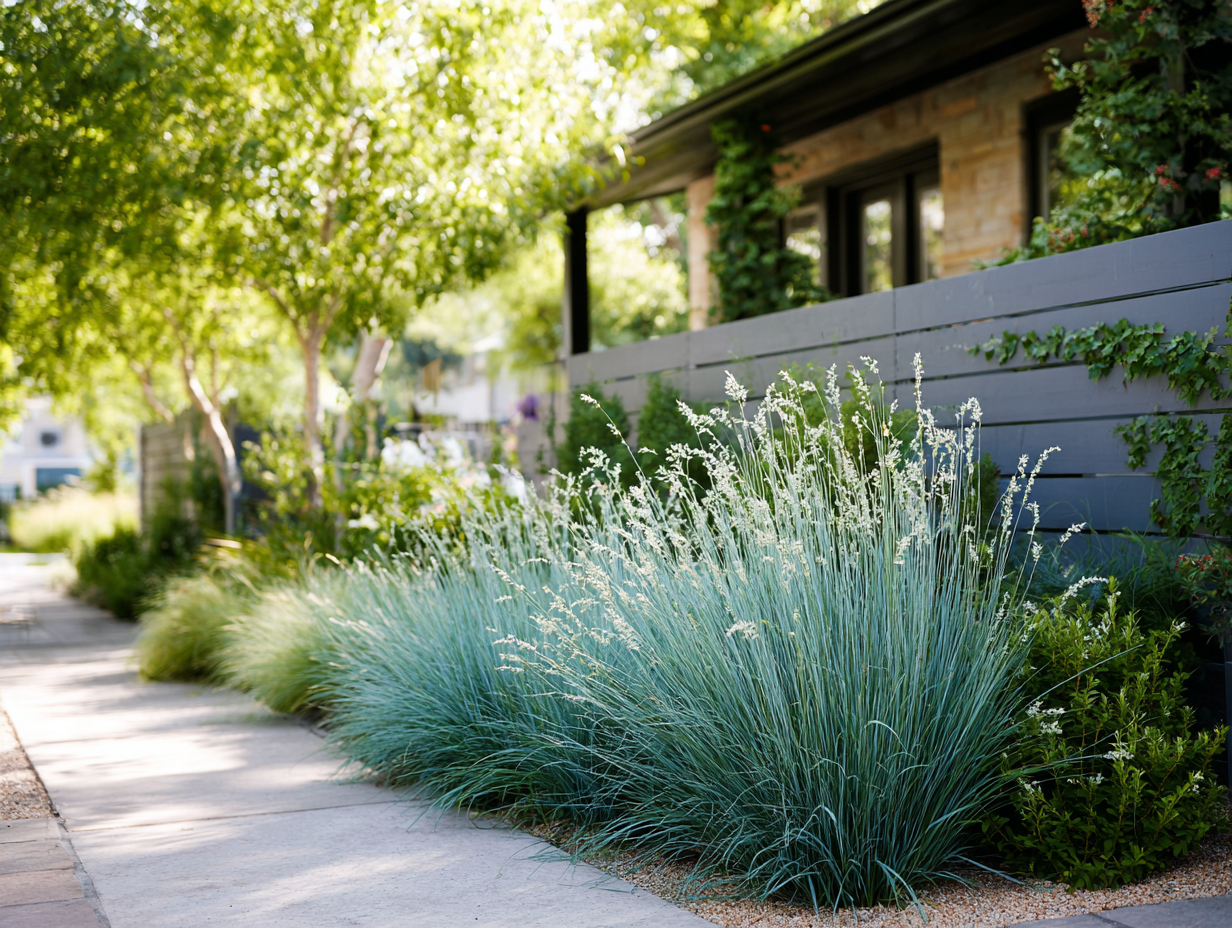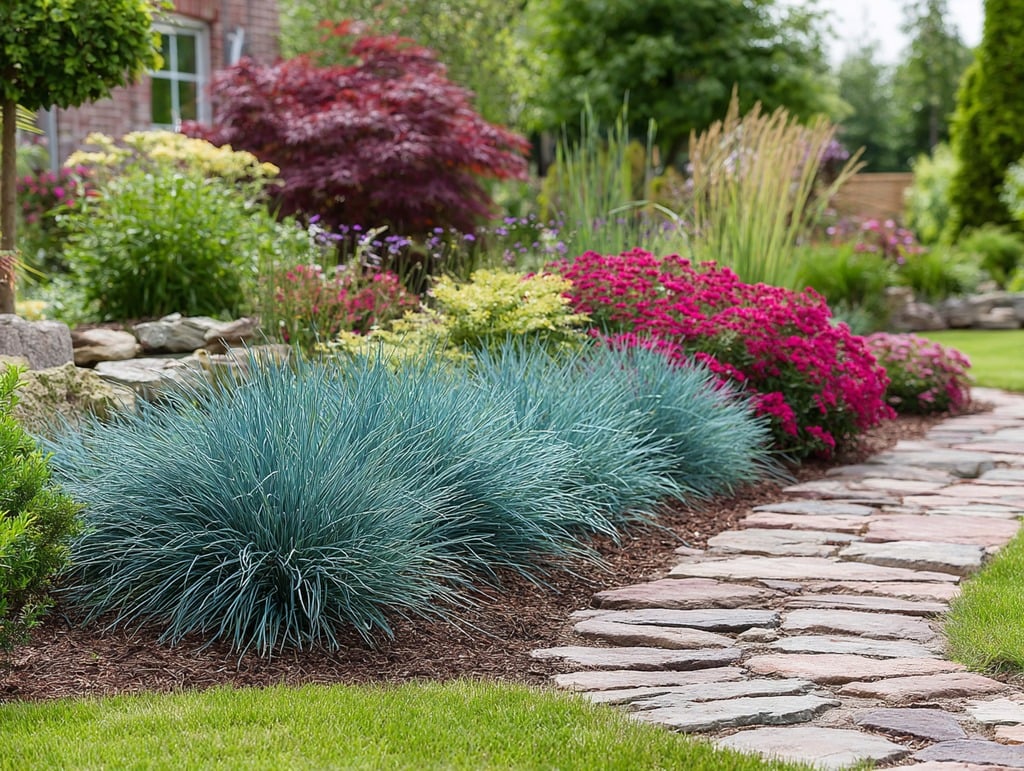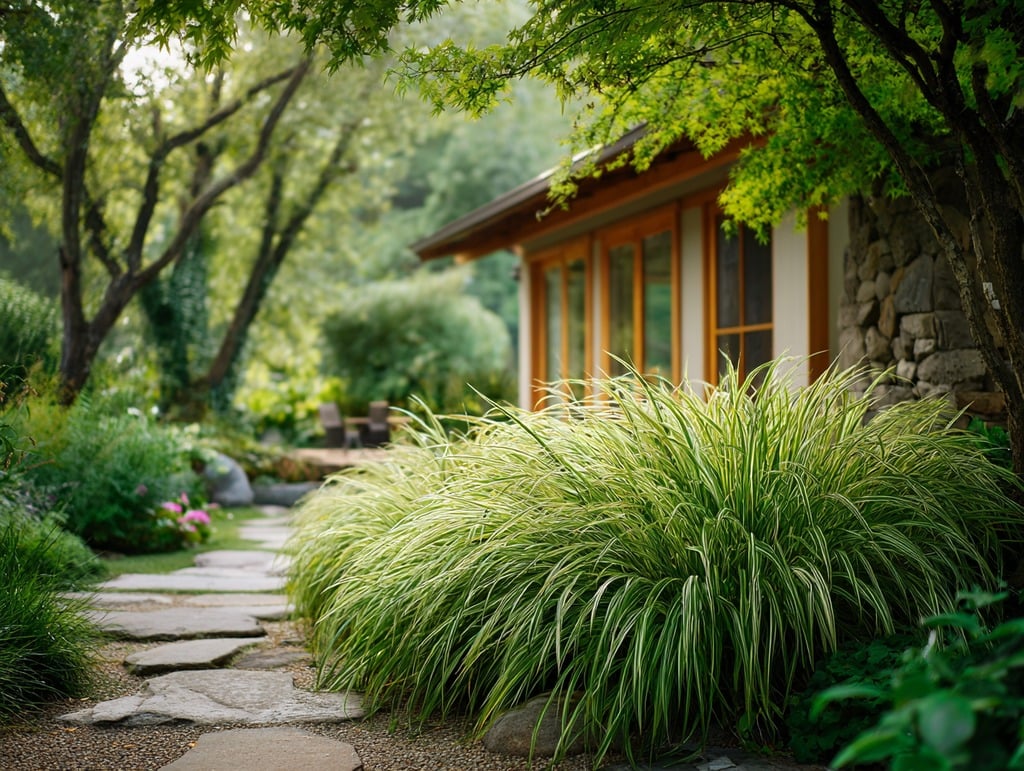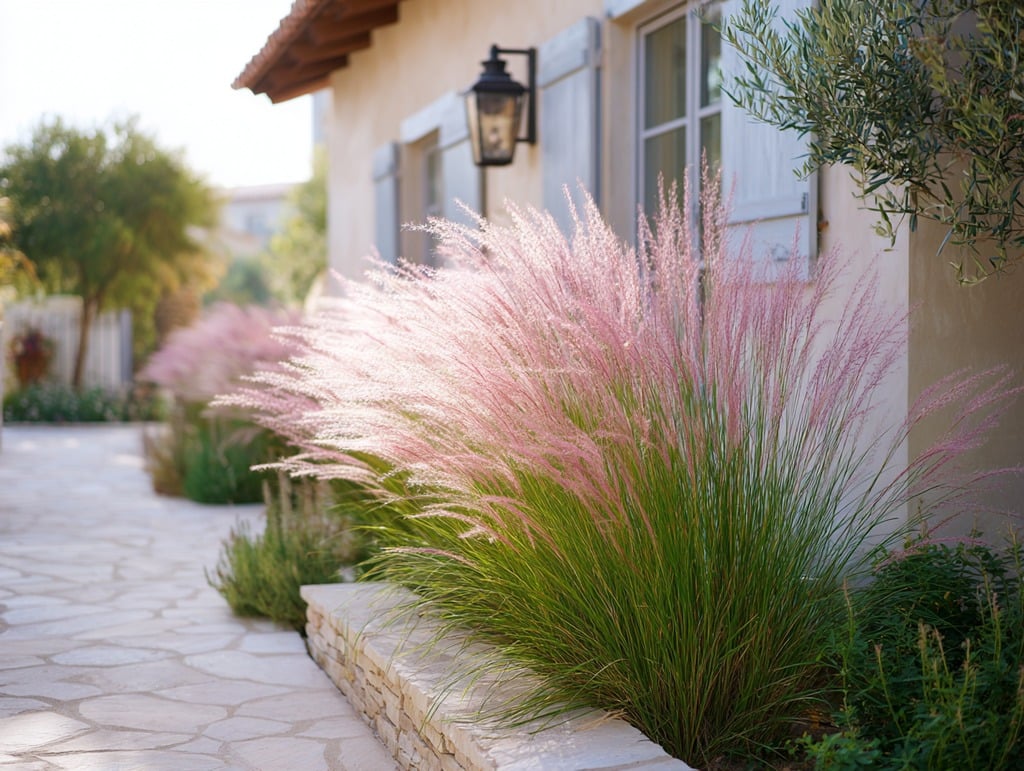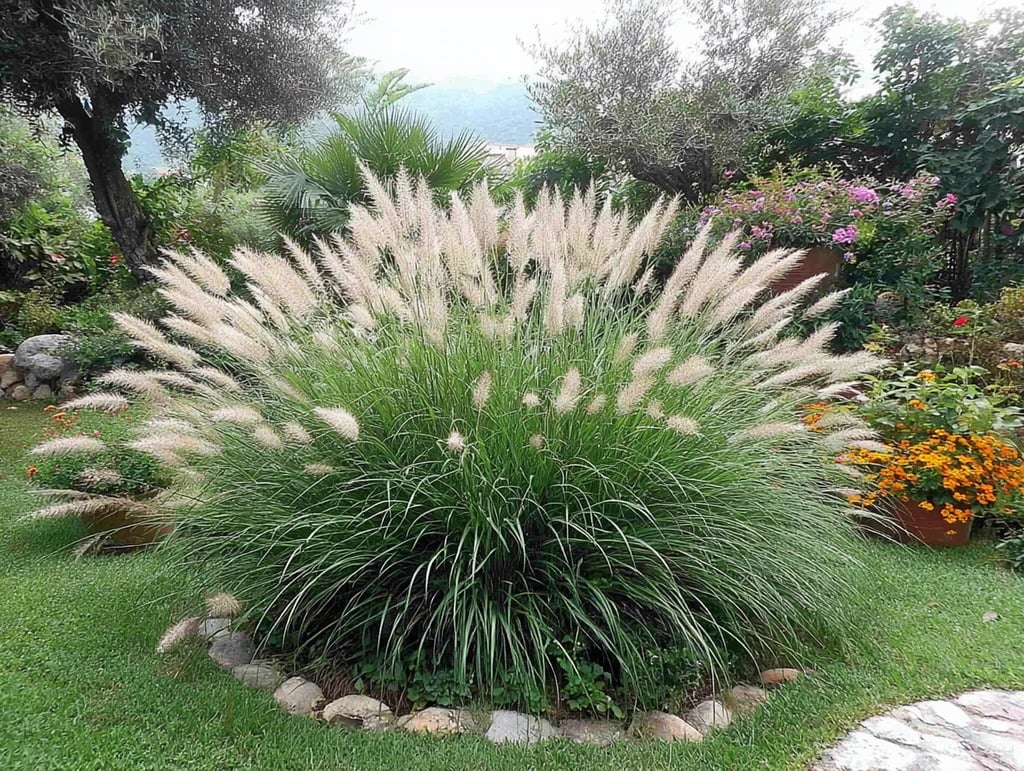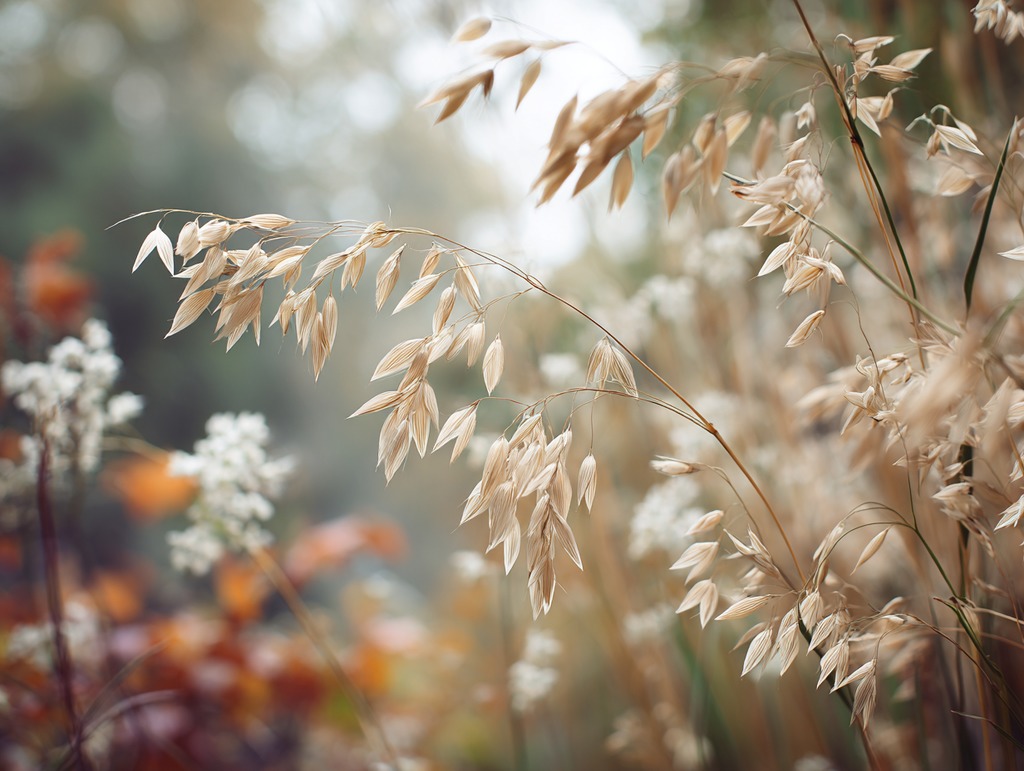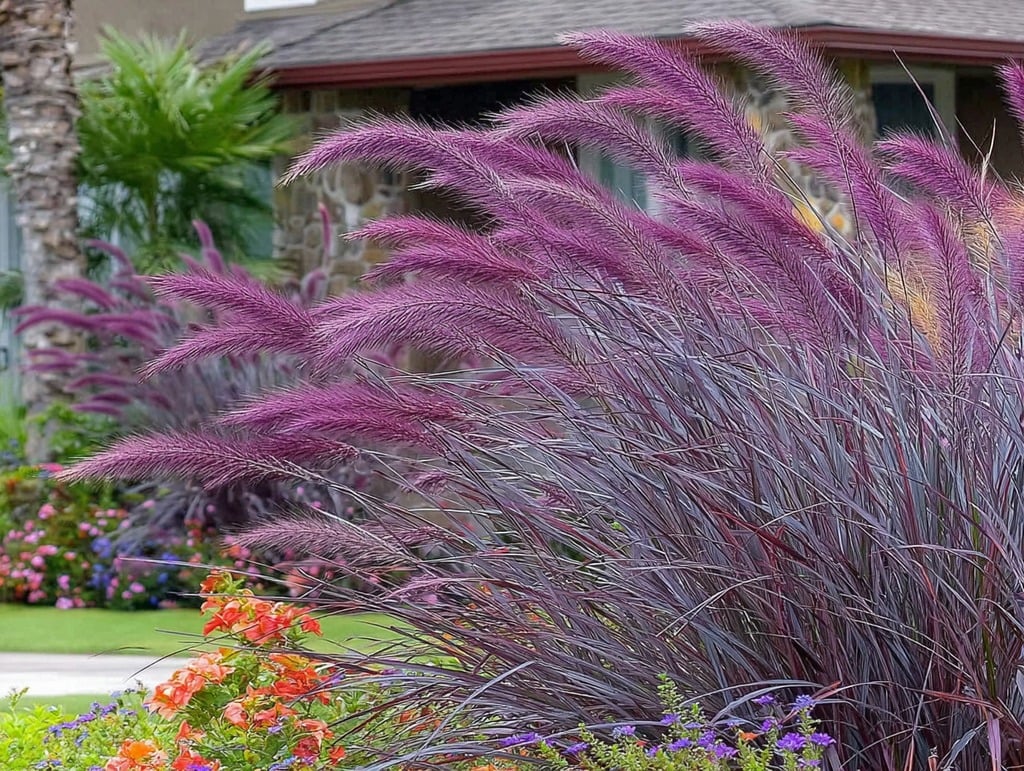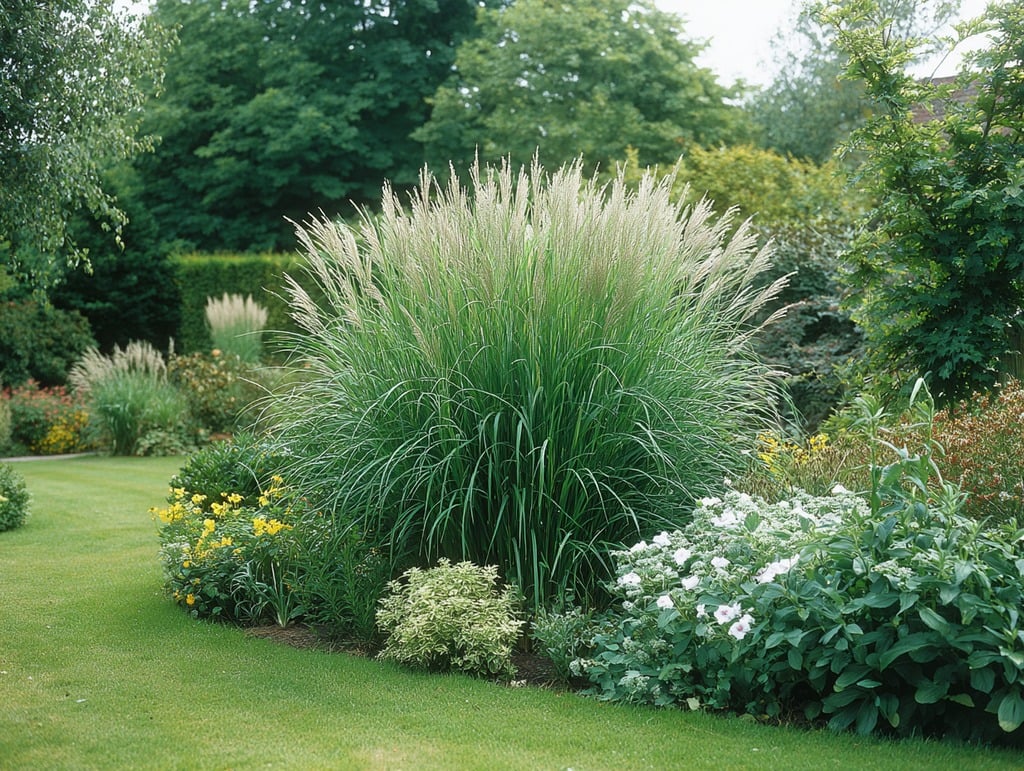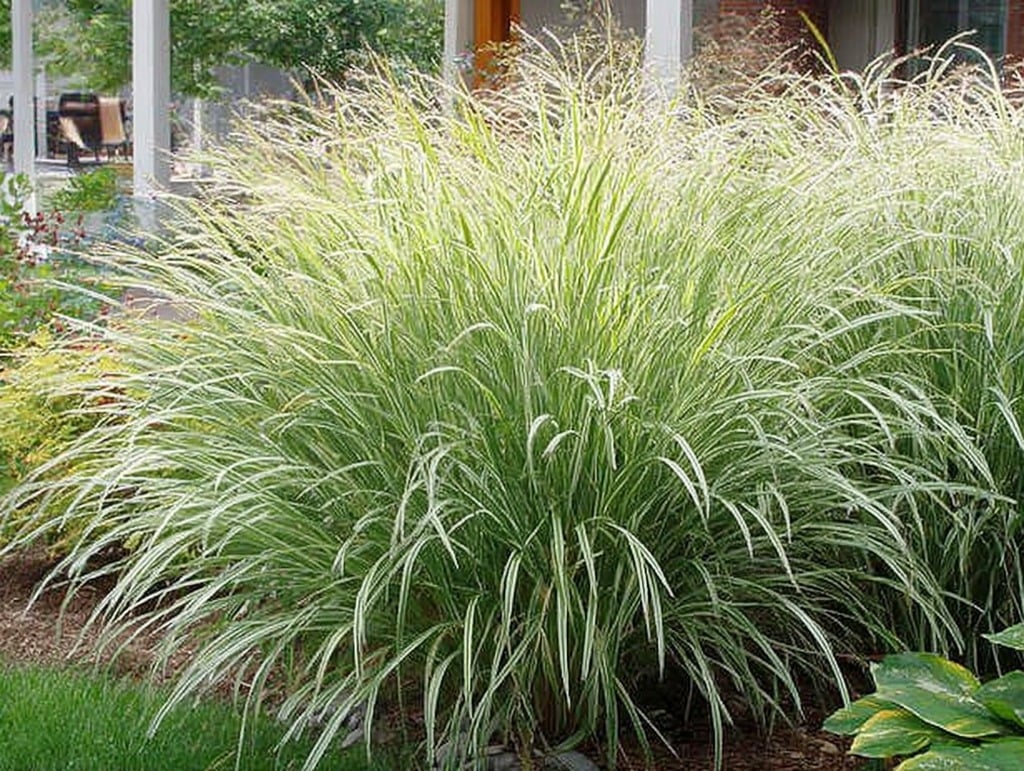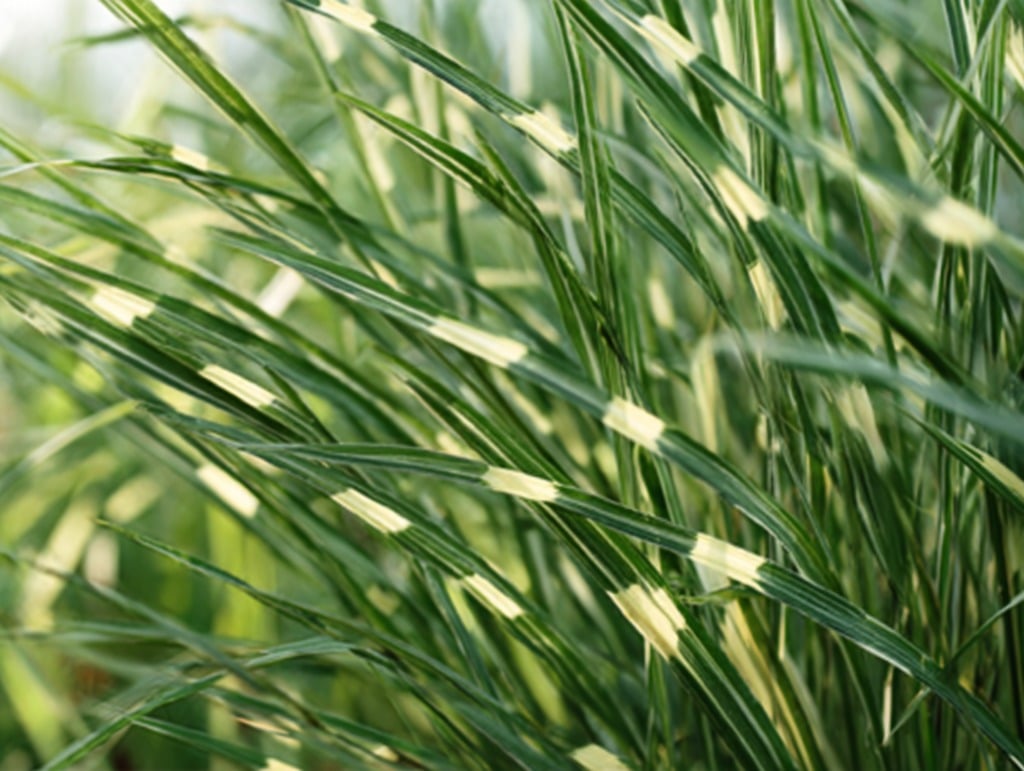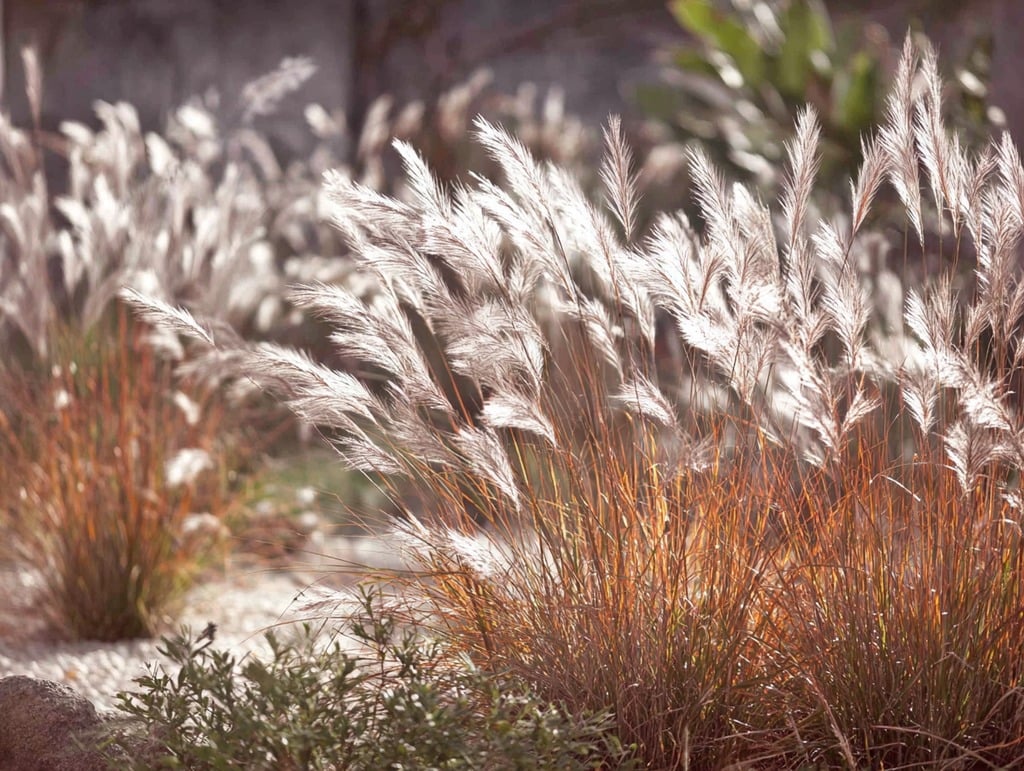When it comes to adding year-round beauty, movement, and texture to your landscape, few plants offer the versatility and low-maintenance charm of ornamental grasses. Often overlooked in favor of flowering shrubs or perennials, these graceful growers provide an architectural quality that can bring a whole new dynamic to your yard. From tall, swaying plumes to compact, tufted clumps, ornamental grasses are the unsung heroes of garden design.
Whether you’re looking to soften the edges of a walkway, fill in a bare spot, create a privacy screen, or simply add contrast and motion to your beds, there’s an ornamental grass to suit nearly every garden aesthetic and growing condition. Many varieties are drought-tolerant, pest-resistant, and thrive in poor soils—making them ideal choices for both beginners and seasoned gardeners alike.
Please note: The Cameron Team has not been paid or received any other compensation to include any of the products featured on this post, but the author has included affiliate links and content. If you click on a link, they may earn a commission – a high-five for great content!
Here are 15 standout ornamental grasses that deliver big on texture, movement, and year-round interest:
1. Feather Reed Grass (Calamagrostis x acutiflora ‘Karl Foerster’)
This award-winning grass is a landscape designer’s dream. With its narrow, upright habit and feathery wheat-colored plumes, Feather Reed Grass ‘Karl Foerster’ adds vertical interest and gentle sway to garden beds. It thrives in full sun and tolerates a variety of soils, including clay. A perfect choice for borders or as a graceful screen.
-
Height: 4–5 feet
-
Best for: Formal or modern landscapes
-
Bonus: One of the earliest grasses to flower in summer
2. Blue Fescue (Festuca glauca)
Compact, cool-toned, and low-growing, Blue Fescue forms tidy mounds of spiky steel-blue foliage that hold their color through the heat of summer. It’s often used as an edging plant, in rock gardens, or to fill small gaps in mixed borders.
-
Height: 10–12 inches
-
Best for: Contrasting color and texture
-
Bonus: Deer-resistant and drought-tolerant
3. Switchgrass (Panicum virgatum ‘Shenandoah’)
This North American native shines in late summer with burgundy-tinted blades and airy seed heads that shimmer in the sunlight. Switchgrass ‘Shenandoah’ is a more compact variety, perfect for smaller spaces and mixed borders.
-
Height: 3–4 feet
-
Best for: Native plant gardens and wildlife-friendly landscapes
-
Bonus: Attracts birds and butterflies
4. Japanese Forest Grass (Hakonechloa macra ‘Aureola’)
Looking for something elegant for the shade? Japanese Forest Grass is one of the few ornamental grasses that thrives in low light. Its arching golden blades spill over rocks, walls, and borders like a living waterfall.
-
Height: 12–18 inches
-
Best for: Shade gardens and woodland borders
-
Bonus: Adds color and softness without overpowering nearby plants
5. Muhly Grass (Muhlenbergia capillaris)
When fall rolls around, Pink Muhly Grass puts on a show. Its billowing, cotton-candy-like plumes in soft pinks and purples add an ethereal touch to any sunny garden. It’s particularly stunning when planted en masse.
-
Height: 3–4 feet
-
Best for: Mass plantings or dramatic focal points
-
Bonus: Native to the southeastern U.S.—perfect for coastal or sandy soils
6. Little Bluestem (Schizachyrium scoparium)
Another American native, Little Bluestem offers fine-textured foliage that changes color with the seasons—from blue-green in summer to reddish-orange in fall. Its upright form brings structure and contrast.
-
Height: 2–3 feet
-
Best for: Prairie or low-maintenance gardens
-
Bonus: Excellent for erosion control and native pollinator support
7. Fountain Grass (Pennisetum alopecuroides ‘Hameln’)
Compact and graceful, Fountain Grass ‘Hameln’ is one of the most popular varieties of fountain grass. Its soft, bottlebrush-like plumes arch over narrow green blades, offering a breezy, naturalistic feel to borders and containers.
-
Height: 2–3 feet
-
Best for: Pathway edging and containers
-
Bonus: Low maintenance and great in dried arrangements
8. Northern Sea Oats (Chasmanthium latifolium)
This distinctive grass features flattened, drooping seed heads that resemble oat sprays—especially lovely when backlit by the sun. It’s ideal for shady spots and adds a woodland vibe to the garden.
-
Height: 3–5 feet
-
Best for: Woodland gardens or shady foundations
-
Bonus: Excellent cut flower for fresh and dried arrangements
9. Purple Fountain Grass (Pennisetum setaceum ‘Rubrum’)
This tropical beauty is grown as an annual in colder climates but worth the effort for its dramatic burgundy foliage and fluffy, purple plumes. It’s a showstopper in containers and mixed summer beds.
-
Height: 3–5 feet
-
Best for: Tropical or exotic garden themes
-
Bonus: Makes a striking centerpiece in planters
10. Maiden Grass (Miscanthus sinensis ‘Gracillimus’)
With tall, arching blades and fine texture, Maiden Grass adds elegance and movement to large garden beds. Its late-summer plumes emerge coppery and fade to silver, creating a shimmering winter silhouette.
-
Height: 6–8 feet
-
Best for: Backdrops and privacy screens
-
Bonus: Offers four-season interest if left standing through winter
11. Japanese Silver Grass (Miscanthus sinensis ‘Morning Light’)
A more refined cousin of ‘Gracillimus’, Japanese Silver Grass ‘Morning Light’ boasts narrow variegated blades with silvery-white margins that sparkle in the sun. This variety is prized for its tidy form and soft glow.
-
Height: 4–5 feet
-
Best for: Sophisticated planting schemes
-
Bonus: One of the best Miscanthus varieties for smaller spaces
12. Zebra Grass (Miscanthus sinensis ‘Zebrinus’)
True to its name, Zebra Grass has bold horizontal stripes across its green blades. It adds a playful and exotic touch to sunny beds while still delivering all the vertical drama Miscanthus is known for.
-
Height: 5–7 feet
-
Best for: Bold backdrops or conversation starters
-
Bonus: Strong architectural shape with whimsical flair
13. Sedge (Carex oshimensis ‘Evergold’)
Not all ornamental grasses are true grasses. Sedge belongs to a different plant family but behaves similarly in the landscape. ‘Evergold’ is a low-growing variety with creamy yellow and green variegated leaves—perfect for shady borders and containers.
-
Height: 12 inches
-
Best for: Shady beds and underplanting trees
-
Bonus: Evergreen in mild climates and excellent groundcover
14. Silver Beardgrass (Andropogon ternarius)
This Southeastern native is a hidden gem, with silvery-white seed heads that glint in the sun and wave in the wind. It turns purplish-bronze in the fall and offers valuable wildlife habitat.
-
Height: 3–4 feet
-
Best for: Meadow gardens and native plantings
-
Bonus: Great alternative to invasive grasses
15. Tufted Hairgrass (Deschampsia cespitosa)
A cool-season grass that forms neat mounds and sends up delicate, airy flower panicles in early summer. Its fine texture and adaptability make it a graceful addition to both formal and naturalistic designs.
-
Height: 2–3 feet (with flowers)
-
Best for: Cool-season interest in partial shade
-
Bonus: One of the few grasses that thrives in damp soil
How to Use Ornamental Grasses in Your Garden Design
While each of these grasses can be used on its own as a focal point, they truly shine when paired with flowering perennials, shrubs, or in mass plantings. Here are a few tips:
-
Use repetition: Repeating the same grass variety throughout your landscape creates rhythm and unity.
-
Play with scale: Combine tall grasses like Maiden Grass with shorter varieties like Blue Fescue to layer your landscape.
-
Mix textures: Pair soft, wispy grasses with bold-leafed plants like hostas or coneflowers.
-
Don’t cut too early: Many grasses look beautiful in winter frost—wait until early spring to cut them back.
-
Containers count: Smaller grasses like Japanese Forest Grass and Purple Fountain Grass make excellent container companions.
Why Ornamental Grasses Deserve More Attention
Beyond their aesthetic value, ornamental grasses bring numerous ecological and practical benefits:
-
Pollinator Friendly: Many varieties support beneficial insects and birds.
-
Low Water Use: Once established, they’re highly drought-tolerant.
-
Deer & Pest Resistant: Less likely to be nibbled or infested.
-
Low Maintenance: Most require little more than an annual haircut.
-
Seasonal Versatility: Many offer multiseason appeal—from spring greens to frosty winter silhouettes.
Final Thoughts
If your landscape feels a little too static, too rigid, or just a bit dull, consider adding ornamental grasses into the mix. Their ability to bend with the breeze, catch the light, and bring softness to hard edges is nothing short of magical. Plus, they ask for so little in return—just a sunny spot (in most cases), a little space to breathe, and a spring trim.
Whether you’re designing a modern front yard, a cottage-style border, or a native habitat garden, there’s an ornamental grass ready to elevate your space with movement, structure, and timeless appeal.

